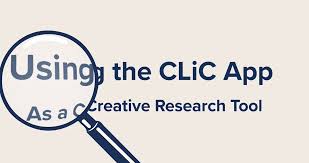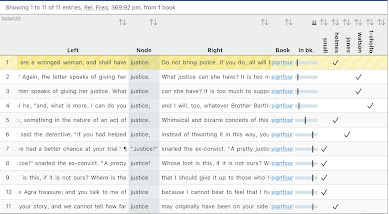CLiC Dickens Project: Analyzing Literature with Digital Methods
Digital humanities, also known as humanities computing, merges technology with the study of the humanities. This blog entry is part of a lab task assigned by Barad Sir, focusing on the CLiC Dickens Project. This project showcases how corpus stylistics and computer-assisted techniques can be employed to analyze literary texts, providing new insights into how readers interpret fictional characters. A central part of the project is the development of the CLiC web app, created specifically for the analysis of literary works. The CLiC Dickens Project began at the University of Nottingham in 2013 and has since become a collaborative initiative with the University of Birmingham.
You can explore the resources here:
Examining Themes in ‘The Sign of Four’
‘The Sign of Four’ is a Sherlock Holmes novel written by Sir Arthur Conan Doyle. In this exercise, we analyze how Doyle addresses the themes of justice and the role of women.
We begin by investigating the instances where the word "justice" appears in the text, focusing on which characters use it most frequently. Interestingly, it is Jonathan Small, the antagonist, who uses the term "justice" more often than anyone else. This is unexpected, as one might assume Sherlock Holmes or Dr. Watson, who are committed to pursuing justice, would be the primary users of the word. However, this discovery sheds new light on Jonathan Small’s character—he is portrayed not merely as a villain but as someone who feels wronged and seeks justice for himself. Following Small, Sherlock Holmes uses the word "justice" three times.
To further explore the role of women in the novel, we search for the terms "woman" and "women" and examine how they are described or discussed. The findings show that women are mentioned 20 times throughout the book.
To analyze the portrayal of women, we searched for terms like "woman" and "women" in the text. Women were mentioned 20 times and were frequently described using words like "agitated," "trembling," "attractive," "frightened," and "graceful." These descriptors paint a picture of women as delicate and easily distressed, reflecting the societal attitudes of Doyle’s era. They are often portrayed as vulnerable figures in need of protection or assistance, reinforcing 19th-century notions of female fragility.
Another term used to describe women in the text is "wronged." This thematic link connects female characters like Mary, who lost her father and was wronged by circumstances, with Jonathan Small’s sense of injustice. Mary's decision to seek Holmes’ help reflects her own desire for justice, portraying her as an active character within her constraints, despite the broader depiction of women as passive or dependent. This investigation highlights how Doyle’s portrayal of women mirrors his cultural context and invites readers to consider the gender dynamics shaping his work.
Fictional vs. Real Speech in Jane Austen and 19th-Century Literature
In literary fiction, even when dialect or pronunciation is mimicked, the speech of characters often differs from real spoken language, which tends to be hesitant, non-fluent, and fragmented. Instead, fictional speech is carefully crafted to serve character development, narrative flow, dramatic impact, and symbolic or thematic purposes. In this activity, we explore patterns in fictional speech and compare them to those in real spoken language.
Exploring 19th-century speech, we examined common language clusters in Jane Austen's novels to see how fictional dialogue aligns with or diverges from actual spoken language. In literature, speech is crafted not for exact realism but for characterization, dramatic effect, and thematic depth. This analysis allowed us to study how Austen’s characters reflect their culture and personalities through specific phrases.
For instance, the phrase "I should like to know" appears frequently in Persuasion, mostly spoken by the protagonist, Anne. This polite way of expressing curiosity reflects Anne’s inquisitive nature and her reserved social demeanor. Another phrase, "What do you think of," is often used to solicit opinions about others, ending with words like "him" or "her." This phrase reflects the social preoccupation with others’ reputations and qualities, a recurring theme in Austen’s works.
The phrase "I do not know what" shows hesitation and is used often in Mansfield Park, while "I did not mean to" appears frequently in Emma and Sense and Sensibility, highlighting the characters’ attempts to resolve misunderstandings or assert opinions gently. These speech patterns emphasize how language shapes character interactions and social dynamics in Austen’s novels, as well as her mastery in using dialogue to subtly convey cultural norms.
In our digital literary analysis, we explored the frequency and context of certain words and phrases in classic literature, gaining fresh insights into themes like justice, gender roles, and speech patterns of the 19th century. By using keyword searches across texts, we revealed unexpected findings about character motivations, gender portrayal, and linguistic trends, showcasing the potential of digital tools in literary study.
Learning Outcome
This activity demonstrated the transformative impact of digital tools in literary analysis. By quickly isolating specific words and phrases, we gained insights that would be challenging to uncover manually. This digital approach provides new perspectives on classic literature, enabling deeper analyses of character motivations, thematic elements, and cultural patterns. Ultimately, such methods underscore how technology can open up new avenues for exploring literature, offering us a richer understanding of texts through data-driven insights.





.jfif)

